On construction sites, rain is more than just a daily inconvenience; it's a force to reckon with. Aside from challenging outdoor working conditions, rain can compromise worker safety and reduce productivity. Therefore, having the right rain gear is not a matter of 'if' but 'when'. This article aims to shed light on different types of rain gear that are crucial for construction workers and guide you on how to choose the best equipment for your comfort and safety. Whether you've been in the construction game for years or have just entered the industry, protecting yourself against the rain should be at the forefront of your planning. Let's break it down.
Importance of Rain Gear in Construction
As the saying goes, the show must go on— and nowhere is this truer than in construction. Work doesn't stop for the rain, and accordingly, construction workers must be adequately prepared to face the elements. Did you know that the very rain that nourishes our gardens can also cause accidents on a construction site, particularly if proper rain gear is not utilised? This includes accidents such as slips and falls, collisions between vehicles, and reduced visibility. In this section, we will discuss the crucial role of rain gear in preventing accidents and injuries on construction sites.
Preventing Accidents and Injuries
Falls, slips, and trips are no laughing matter on a construction site. According to the U.S. Bureau of Labor Statistics, these were the leading cause of fatalities in the industry, accounting for 32% of nonfatal injuries involving days away from work in the private construction sector. At first glance, it may not seem apparent, but rain can drastically amplify these risks, making pathways slippery and creating hazardous working conditions.
A surprising 75% of struck-by fatalities involve heavy equipment such as trucks, which is all the more alarming in wet weather. In 2020, nearly 9% of workplace fatalities among construction workers were caused by exposure to harmful substances or environments, a hazard that can increase in rainy conditions. Dealing with wet equipment and materials can compromise a worker's grip and cause objects to become unexpectedly mobile. Similarly, rain-soaked scaffolding, stairs, and walkways can become treacherous, leading to fatalities due to falls, slips, and trips. In fact, such incidents among specialty trade contractors increased from 229 in 2018 to 281 in 2021.
Nationwide, an average of 275 construction workers has been tragically killed in falls every year since 2011. Understandably, these figures are concerning but they serve a purpose: to highlight the critical necessity of appropriate rain gear. Wearing the right rain gear can quite literally be a lifesaver, offering protection against the elements and reducing the risk of injuries caused by slips, falls, or contact with hazardous materials.
Finally, it's worth mentioning that rain is responsible for causing an average of more than 573,000 car accidents annually. This is representative of the poorer visibility and more dangerous travel conditions that occur during a downpour— conditions that construction workers often need to navigate.
As such, it becomes overwhelmingly clear that rain gear plays a pivotal role in construction. By reducing the risk of injuries and even fatalities, it ensures that workers remain safe, even in the most challenging weather conditions. Moreover, it amplifies the efficiency and productivity on site, thanks to enhanced safety measures. So, while the rain may be a nuisance, the importance of quality rain gear in maintaining safety cannot be underestimated— a step towards secure construction is a step towards prolific development.
Essential Rain Gear for Construction
Renowned poet Henry Wadsworth Longfellow coined the phrase, "Into each life, some rain must fall," but for construction workers, rain is more than just a metaphor. It's a real, tangible obstacle that can impede progress on a project. Once rain starts pouring, it can make a construction site hazardous and difficult, putting the safety of workers at risk. But, with the right gear, these hardworking individuals can carry on with their tasks, rain or shine seamlessly. Here's our guide on essential rain gear for construction to keep you protected and productive even under a downpour.
Waterproof Jackets
In the face of challenging weather, a waterproof jacket can become a construction worker's best ally. Apart from keeping you dry during wet conditions, they offer an additional layer of warmth. They come in eye-catching colors, typically luminous, to enhance visibility in low-light scenarios potentially encountered during stormy weather.
Some key features to look for in a waterproof construction jacket are:
- Breathability: While keeping rain out, a good waterproof jacket should allow sweat to escape, providing a comfortable work experience.
- Durability: Construction sites are rough. Your gear needs to resist wear, tear, and abrasion.
- Visibility: Opt for jackets in bright colors with reflective strips. It should meet stringent visibility standards, ensuring you can be easily noticed in poor light.
Waterproof Pants
Like jackets, waterproof pants for construction workers are designed to keep you dry, without compromising mobility. They should allow flexibility and freedom of movement. A wet and rainy environment shouldn't pardon you from bending, kneeling, climbing, or reaching.
Hunt for these features in your waterproof pants:
- Full sealing seams: Look for pants that feature taped or sealed seams for maximum waterproofing.
- High-waist design: A higher waist ensures less rainwater seeping in between your jacket and pants.
- Heavy-duty fabric: The pants should be resilient enough to handle harsh conditions.
Rubber Boots
Working on a wet construction site means dealing with waterlogged areas and mud. And that's where waterproof rubber boots step in. They are designed not just for water resistance, but also for their material's toughness. They are often reinforced with steel toes for added protection.
Essential features of rubber boots include:
- Non-slip soles: Secure traction in slippery conditions is paramount.
- Ankle support: Look for boots that provide superior ankle stability.
- Insulation: For colder climates, boots with insulation provide extra warmth.
Safety Helmets with Covers
Last but not least, safety helmets with covers, also known as hard hats, are pivotal on any construction site - even more so during rain-soaked conditions. It's crucial to protect your head from falling debris, and a waterproof cover can provide added protection against the rain.
When choosing your safety helmet and cover, consider the following:
- Water resistance: Make sure the helmet offers a visor or cover to shield against rain.
- Adjustability: Head sizes vary, so pick a helmet with an adjustable band.
- Durability: It should comply with existing safety standards, ensuring it withstands impact.
Rain is an unpredictable reality in the world of construction, but with right gear, it need not deter progress or compromise safety. After all, the rain may fall, but sturdy waterproof jackets, waterproof pants, rubber boots, and safety helmets with covers can certainly help soften that meteorological blow. Remember, staying dry isn't just about comfort - it's crucial for productivity and safety in the often-hardened world of construction.
Factors to Consider when Choosing Rain Gear
When faced with the task of selecting appropriate rain gear, there are several key factors to consider. In a world overflowing with choices, making the right decision can appear daunting. However, understanding critical elements makes this task not only easy but also enjoyable, allowing you to enjoy the rain rather than getting overwhelmed by it.
Durability
When considering rain gear, durability is a must. No one wants to invest in rain gear only to have it degrade after a few uses. Here are a few things to look out for when considering the durability of rain gear:
- Material: High-quality material is resistant to wear and tear, such as Nylon or Polyester.
- Coating: Waterproof coating provides added protection, ensuring that the gear withstands harsh weather.
- Construction: Strong seams and closures also contribute to the gear's durability.
Remember, durable gear might be expensive, but it often turns out to be cost-effective in the long run.
Comfort
Comfort is another deciding factor you cannot afford to ignore when selecting rain gear. After all, what's the use of buying gear you can hardly stand wearing for long? Here are some factors to consider:
- Fit: Rain gear should be well-fitted, but leave enough room for movement.
- Breathability: The material should allow sweat and moisture to escape, preventing any discomfort due to dampness.
- Weight: The gear should not be too heavy, as this can make movement difficult.
Comfortable rain gear enhances the joy of experiencing rain, rather than dampening it.
Visibility
Visibility might not be the first thing that comes to mind when considering rain gear, but it is crucial, particularly for outdoor activities in poor lighting or foggy conditions. Here's what you should look for:
- Color: Bright colors can help increase visibility in gloomy weather.
- Reflective strips: These are particularly useful when you're walking or cycling alongside the road.
While the primary role for rain gear is to keep you dry, ensuring you are visible to others could change your experience from being merely rainy to safely radiant.
In the quest for the perfect rain gear, durability, comfort, and visibility don't merely serve as guidelines, they reflect the essence of what it means to enjoy a rainy day. So the next time you face the daunting task of choosing rain gear, remember these simple but profound factors, and let the love for rain guide you.
Buying Rain Gear for Construction
When it comes to the construction industry, there's no telling what Mother Nature will dish out. Rainstorms could either be a light drizzle or a full-blown hurricane. While it may seem as simple as putting on a raincoat, choosing the right rain gear for construction is a task you should put some thought into. Not only does it keep you dry but it also guarantees safety and comfort during harsh weather conditions.
In construction work, dealing with the elements is part of the job. Poor weather doesn't mean the project comes to a grinding halt. So, let's go into the details that will make your rainy day at the construction site less daunting.
Quality Brands and Suppliers
If you want the best quality rain gear, it starts with identifying the top brands and suppliers. This guarantees that you get durable and high performance products, designed to withstand harsh conditions on a construction site.
- Carhartt: Known for their rugged, all-weather gear, Carhartt is a top choice for workers braving the elements. Their rain gear is durable, waterproof, and breathable. Furthermore, it offers excellent visibility in low light conditions.
- Galeton: Galeton provides high-quality, comfortable rain gear that ensures you stay dry all day. Their products feature reinforced seams and snap cuffs for adjustments, providing top-notch job site reliability.
- Viking: Viking's rain gear is well-recognized for its superior waterproof protection and durability. The brand's product line boasts high cutting-edge technology, such as 100% wind and water resistance.
- Grundéns: A favorite among fishers, Grundéns offer rain gear with maximum waterproofness and durability. Their gear uses lightweight materials, making it easy to maneuver in.
"Every construction worker deserves to be properly equipped, especially when the heavens open up and work must go on. Quality should never be compromised, and employees' safety and comfort should always come first."
After you've settled on the supplier, it's crucial to assess factors such as sizing, material, breathability, and visibility before making a purchase. Remember, the best rain gear for construction should fit well, be made of durable material, and be breathable to prevent overheating. Additionally, it needs to be visible enough for safety in low light conditions.
Choosing rain gear might seem like a minor decision but bear in mind - an uncomfortable worker is an unproductive worker. Investing in quality rain gear increases comfort, safety, and ultimately, productivity on the job site. With this guide, you should be well equipped to make an informed decision the next time you're shopping for rain gear.
Conclusion
In the realm of construction, staying dry isn't just a luxury - it's vital for both safety and efficiency. Selecting appropriate rain gear can reduce accidents, increase comfort, and boost productivity even in the most severe weather conditions. Remember, opting for high-quality, durable, and comfortable items like waterproof jackets, pants, and particularly gear optimized for visibility should always be top of your list.
One innovative supplier, Hurricane Raingear, proudly stands out in this sector. During the deluge, their 100% waterproof and rip-resistant rain gear, renowned for enhancing both safety and comfort, could just be a game-changer on your construction site. Crafted in the heart of the Pacific North West, all Hurricane products speak to the company's commitment to quality. You can check out their reliable range of products here.
Remember, every cloudburst is an opportunity to test your team's mettle. Let your waterproof high-vis armor do its job, so you can get on with yours, regardless of the weather. Stay safe, dry, and productive - all with a little help from the right rain gear.
Frequently Asked Questions
-
What are the essential rain gear items for construction workers?
The essential rain gear items for construction workers include waterproof jackets, pants, and boots, as well as waterproof gloves and hats to ensure complete protection from the rain.
-
Why is it important to have rain gear on a construction site?
Having rain gear on a construction site is important as it helps protect construction workers from getting wet, which can lead to discomfort, cold, and potential health issues. It also helps to maintain productivity and reduce the risk of accidents due to slippery surfaces.
-
What features should I look for in waterproof jackets and pants for construction work?
When choosing waterproof jackets and pants for construction work, look for features such as sealed seams, adjustable cuffs and hems, reflective strips for visibility, and pockets for storing small tools or personal items.
-
Are there specific safety considerations for rain boots in construction?
Yes, rain boots for construction work should not only be waterproof but also have slip-resistant outsoles to ensure proper grip on wet surfaces. Additionally, they should provide adequate ankle support and meet any other safety requirements specific to the construction site.
-
How do I take care of my rain gear to prolong its lifespan?
To prolong the lifespan of your rain gear, it is important to follow the manufacturer's instructions for washing and maintenance. Avoid using harsh chemicals, excessive heat, or machine drying, as these can damage the waterproofing capabilities of the gear.






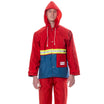
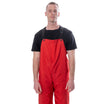
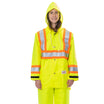
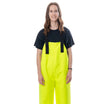
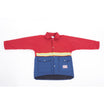
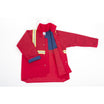

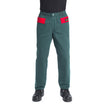
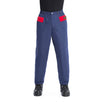
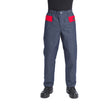
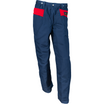
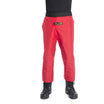
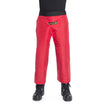
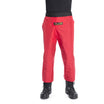
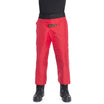
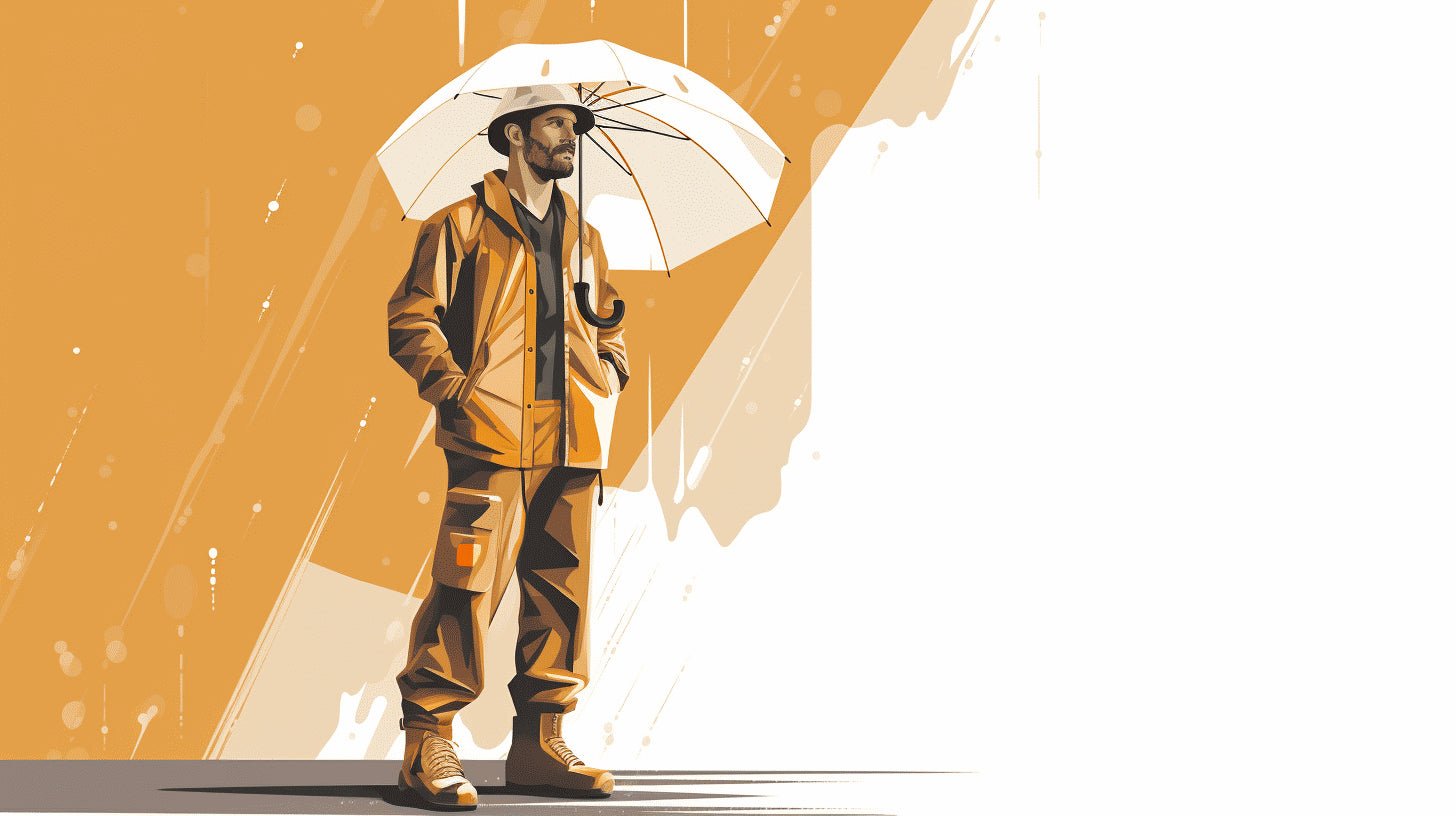
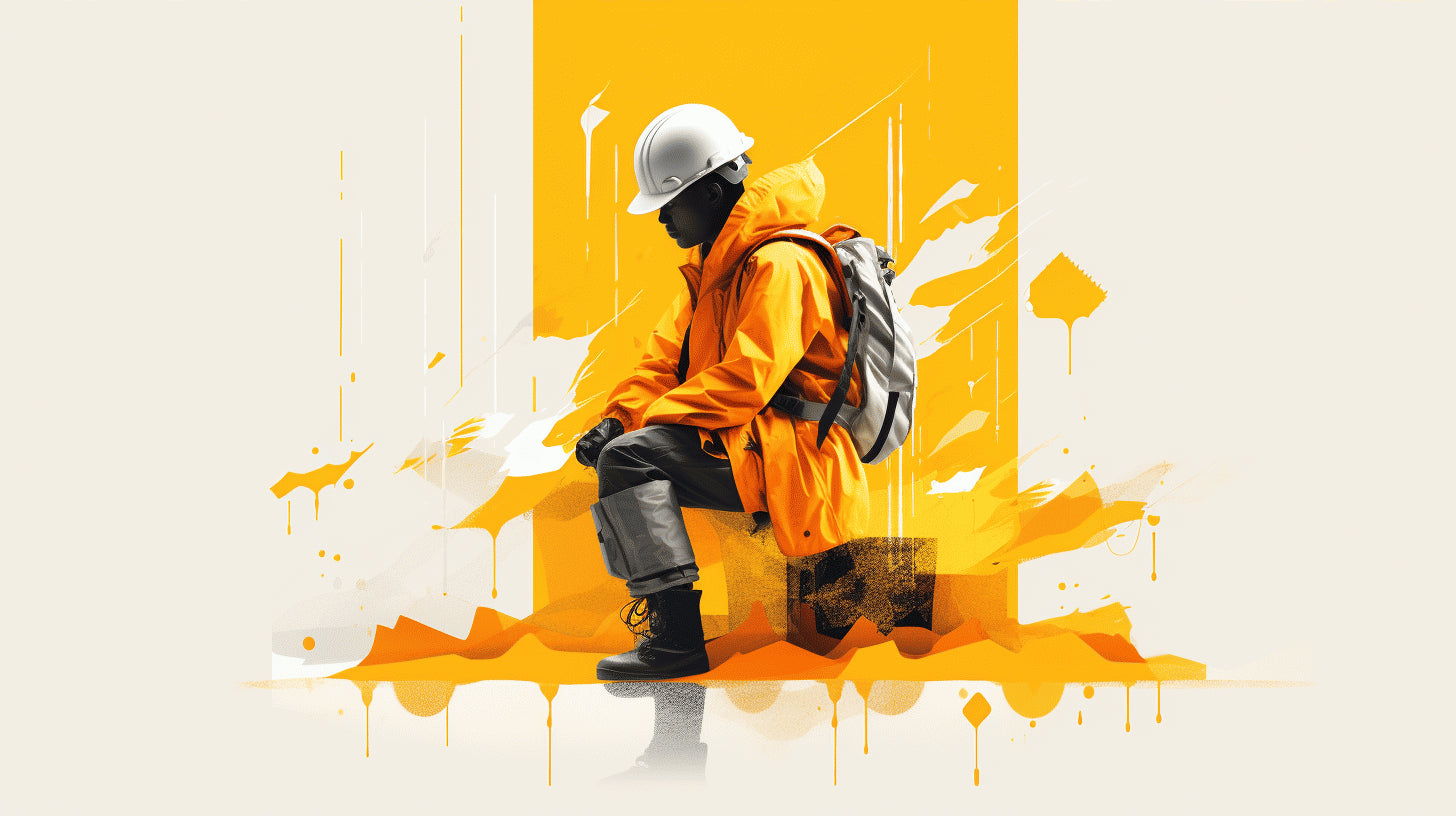

Leave a comment
This site is protected by hCaptcha and the hCaptcha Privacy Policy and Terms of Service apply.